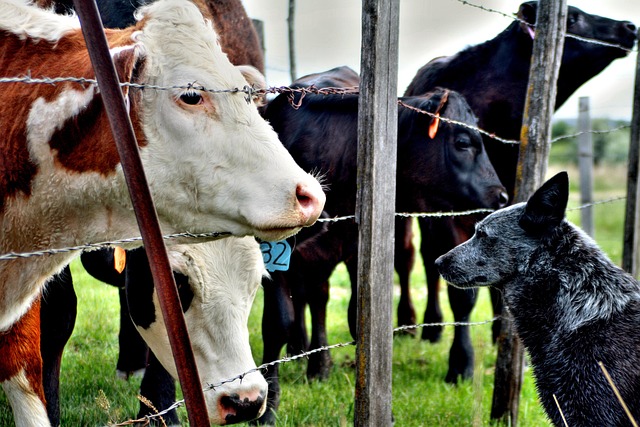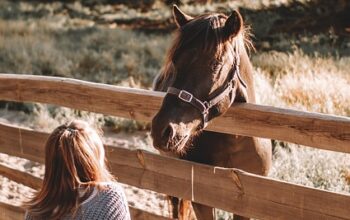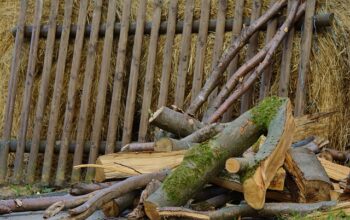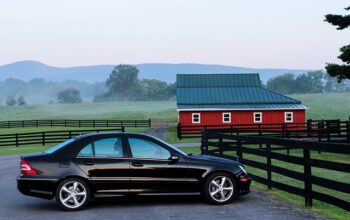Choosing the right fence for farms in Ontario requires understanding unique needs like farm size, topography, livestock type, and security requirements. Farm size dictates fence durability, while topography influences placement and type. Livestock management practices guide specific choices, with electric fencing popular for flexible grazing control. Durable materials like steel or aluminum ensure robust protection against harsh weather and livestock, making them ideal for cattle fences. By assessing these factors, farmers can select suitable fencing options tailored to Ontario's diverse agricultural landscape in 2025.
In Ontario, choosing the right cattle fencing is crucial for effective livestock management and farm aesthetics. With diverse landscapes and various livestock needs, selecting a suitable fence goes beyond traditional preferences. This 2025 guide explores the top 10 fencing options tailored to Ontario farms, considering unique farm requirements, durable materials, innovative designs, and cost-effective solutions. From classic wooden post fences to cutting-edge electric and post-tensioned options, discover how to enhance your farm’s security and visual appeal with the perfect fence.
Evaluating Your Farm's Unique Needs
When considering a fence for farms in Ontario, evaluating your unique needs is the first step to ensuring an effective and efficient solution. Every farm is different – from size and topography to the type of livestock and security requirements. For instance, a small dairy farm with a few head of cattle may require a simple, low-cost barrier to keep animals contained, while a large grazing property might demand a more robust, durable fence to withstand harsh weather conditions and potential wildlife intrusions.
Additionally, aesthetic considerations should not be overlooked. Some farmers prefer a traditional, natural look with wooden posts and rails, while others may seek modern, sleek options that complement their landscape design. Ontario’s diverse climate also plays a significant role; selecting materials resistant to rot, rust, or corrosion is essential for long-lasting performance. Understanding your farm’s specific needs will help guide you towards the most suitable fencing option in 2025.
– Assessing land topography and size
When considering a fence for farms in Ontario, assessing land topography and size is a crucial first step. The terrain’s contours, inclines, and any bodies of water or natural barriers will influence the type and placement of fencing required. For instance, rolling hills may necessitate a more flexible fence design that can adapt to uneven ground, while water bodies require specific materials that resist moisture damage.
The size of the property is equally important. Larger farms need fences that can span wide areas, potentially requiring sturdier posts and stronger wire or rail configurations for longevity. Smaller plots might opt for more cost-effective options, focusing on durability rather than extensive length. Understanding these factors ensures a suitable fence solution tailored to Ontario’s diverse agricultural landscape.
– Consideration of livestock types and management practices
When choosing a fence for farms in Ontario, considering livestock types and management practices is paramount. Different animals have varying needs and behaviors that can dictate the ideal fence type. For instance, sheep and goats require a more secure barrier to prevent them from escaping due to their smaller size and tendency to climb or jump. In contrast, larger livestock like cattle need fences strong enough to withstand their strength and potential for pushing against them.
Management practices also play a significant role in fence selection. Fences should facilitate efficient grazing rotation and easy access for farm workers. Electric fencing is a popular choice for its flexibility and ability to control animal movement without physically confining them. This option is particularly useful for managing large areas and ensuring animals stay within designated zones for optimal grazing.
Durable Materials for Long-Lasting Protection
When choosing a cattle fence for farms in Ontario, selecting durable materials is key to ensuring long-lasting protection and security for your livestock. Opting for high-quality, weather-resistant options will save you from frequent replacements and repairs, making it a wise investment for any farmer.
Materials like steel and aluminum are top choices due to their superior strength and resistance to rust and corrosion. These materials can withstand harsh weather conditions and the constant movement of cattle, providing a robust barrier that protects your farm and animals. Additionally, modern manufacturing processes ensure these fences maintain their integrity over time, giving you peace of mind and a reliable fence for years to come.
When choosing a fence for your Ontario farm in 2025, understanding your specific needs is key. By evaluating land topography, size, and livestock types, you can select from a range of durable materials and top-rated fencing options that will provide long-lasting protection. From traditional wood to modern vinyl and creative metal designs, there’s a fence solution to suit every farm and budget. Invest in a sturdy barrier that not only secures your cattle but also enhances the overall aesthetics of your property.




